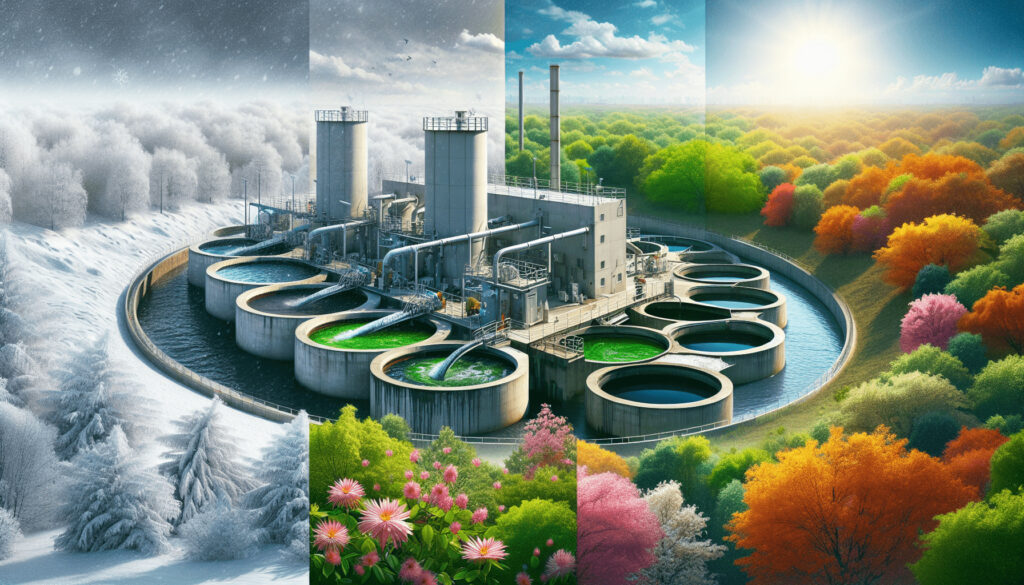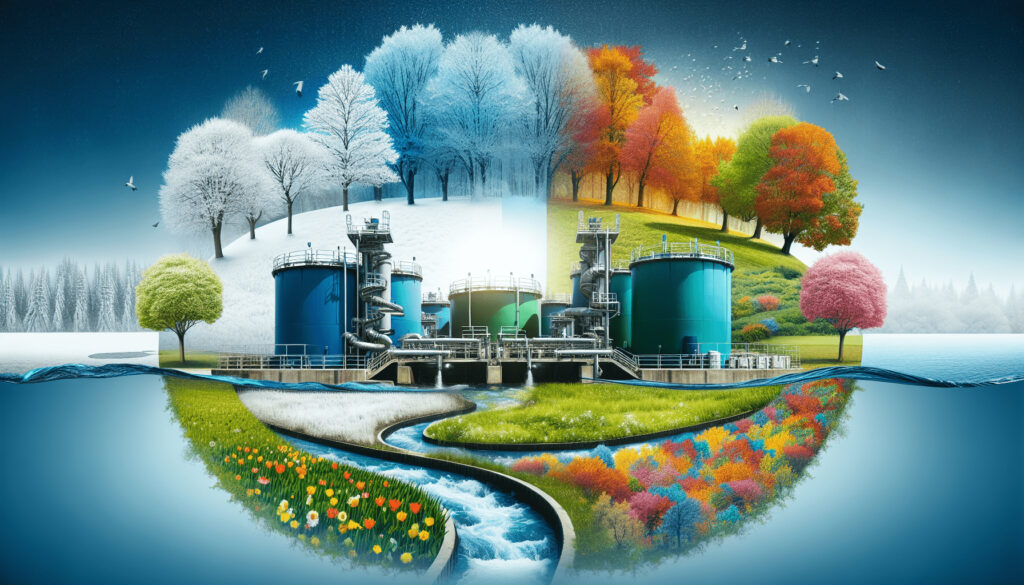Do you know how seasonal changes can impact the efficiency of the activated sludge process in wastewater treatment plants? It’s fascinating how something as simple as a change in temperature or daylight hours can prompt adjustments in this integral part of treating wastewater. Understanding these seasonal shifts can greatly enhance your ability to maintain optimal performance year-round.

Understanding the Activated Sludge Process
The activated sludge process is a cornerstone of wastewater treatment, designed to break down organic pollutants through the actions of microorganisms. These tiny bacteria and protozoa are cultured into a “sludge” that acts like a hungry workforce, digesting organic matter present in the wastewater. It’s an elegant, efficient system that works well under a variety of conditions—most of the time.
The Basic Mechanics
In simple terms, wastewater enters an aeration tank where it mixes with the activated sludge. Aeration provides the oxygen these microorganisms need to thrive and break down organic pollutants. The mixture then proceeds to a secondary clarifier where solids settle out, and treated water flows out. The settled sludge, rich in microorganisms, is partially recycled back to the aeration tank to maintain the process while the remaining part is removed for further treatment or disposal.
Variables in Action
While the fundamentals remain the same, various factors can influence the efficiency of this process. These variables include temperature, pH levels, the presence of inhibitory substances, and of course, season.
Seasonal Impact on the Process
Seasonal shifts bring a host of changes that can affect the activated sludge process. Each season presents unique challenges and benefits that need to be managed for optimal performance.
Spring: A Time of Renewal
Spring is a transition period where both temperature and daylight hours start to increase. This can expedite microbial activity, which may seem beneficial but can also cause challenges.
Temperature Increase
As temperatures rise, microbial activity speeds up. This can lead to an increase in bioflocculation, the process where microorganisms clump together to form larger particles. Higher bioflocculation rates can improve the settling characteristics of the sludge, enhancing overall efficiency.
However, the increase in temperature can also lead to faster rates of biological oxidation, depleting oxygen levels more quickly and requiring adjustments in aeration rates.
Rainfall and Dilution
Spring often brings increased rainfall, leading to the potential for diluted influent due to stormwater infiltration. Dilution can lower the concentration of pollutants that the microbes have to digest, impacting the organic loading rate and possibly making the process less efficient.
Summer: Peak Performance with Caution
Warmer temperatures during summer often mean peak microbial activity. While this can be beneficial, it also requires careful control to avoid potential pitfalls.
Higher Temperatures
Elevated temperatures can reduce the solubility of oxygen in water, complicating aeration efforts. It may become necessary to increase aeration or enhance mechanical mixing to ensure that microorganisms get the oxygen they need to function efficiently.
Potential Overgrowth
With the increase in microbial activity, there’s also the risk of excessive biological growth. This can lead to issues like bulking, where filamentous bacteria grow so much that they interfere with the settling process, causing poor sludge quality and effluent.
Autumn: The Decline Phase
Autumn signals the onset of cooler temperatures and shorter days. Microbial activity starts to decline, requiring a shift in how the process is managed.
Lowered Activity
As temperatures drop, microbial metabolic rates decrease. This can lead to slower decomposition of organic matter, requiring longer retention times in the aeration tank to maintain efficiency. Adjustments in sludge age or the quantity of recycled sludge might be needed to accommodate this decline.
Leaf Fall and Organic Load
Leaf fall in autumn can contribute to an increased organic load, impacting the influent characteristics. This sudden burst of organic material can temporarily overwhelm the system, necessitating closer monitoring and potential adjustments.
Winter: The Slowdown
Winter presents the most significant challenges due to colder temperatures that substantially reduce microbial activity and slow the activated sludge process.
Reduced Microbial Activity
Colder temperatures decrease the metabolic rates of the bacteria and other microorganisms responsible for breaking down organic pollutants. You may need to extend the retention time or increase the volume of the aeration tank to keep up with the workload.
Ice Formation
In colder climates, ice formation can present mechanical challenges, such as blocking aerators or mixers. This can severely hamper the oxygen supply needed for the activated sludge process, requiring innovative solutions like installing heaters or using mechanical ice breakers.
Strategies for Seasonal Adjustments
Understanding the seasonal impacts is just part of the equation. Making the right adjustments to your activated sludge process can ensure efficient operation all year round.
Aeration Adjustment
One of the most straightforward adjustments involves altering aeration rates. Increased aeration can be crucial in warmer months when microbial activity is high, while reduced aeration can be more efficient in colder months when activity slows down.
Temperature Control
While you can’t control the weather, you can manage the environment within your treatment plant. Implementing temperature control measures, such as heating systems for winter months or shading and cooling systems for summer, can stabilize microbial activity and improve efficiency.
Process Monitoring
Continuous monitoring of key parameters like dissolved oxygen, pH, and sludge characteristics can provide insights into necessary adjustments. Real-time data enables quicker responses to seasonal changes, helping to maintain optimal conditions for microbial activity.
Sludge Management
Managing the amount of sludge recycled back into the aeration tank can help balance microbial activity. During high-activity periods like summer, reducing the sludge age can prevent overgrowth and bulking, while increasing sludge age in autumn and winter can compensate for reduced microbial activity.
Nutrient Balancing
Seasonal changes can affect the nutrient balance in the influent. Adding or reducing nutrient supplements can help maintain an optimal environment for the activated sludge process. For example, additional carbon sources might be needed in spring when influent tends to be more diluted.
Table: Seasonal Adjustments for the Activated Sludge Process
| Season | Key Challenges | Recommended Adjustments |
|---|---|---|
| Spring | Temperature increase, dilution | Adjust aeration rates, monitor organic loading |
| Summer | Higher temperatures, overgrowth | Increase aeration, manage sludge age, monitor bulking |
| Autumn | Lowered activity, leaf fall | Extend retention time, adjust sludge age, monitor influent |
| Winter | Reduced activity, ice formation | Increase retention time, ensure aerator functionality, adjust temperature control |

Final Thoughts
Seasonal shifts impact the activated sludge process in nuanced ways, necessitating thoughtful adjustments and continual monitoring. By understanding these shifts and implementing appropriate strategies, you can ensure that your wastewater treatment process remains efficient and effective throughout the year. Whether it’s tweaking aeration rates, managing sludge, or balancing nutrients, each action contributes to a more resilient and adaptable system.
So, what adjustments will you make to ensure the activated sludge process in your treatment plant thrives in every season?